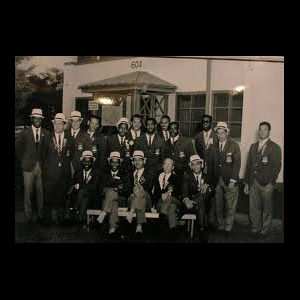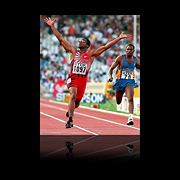media_artricles :: 2012
Cleverly woven tapestry
Dr Jesse Noel (former NAAA president)Trinidad Express :: 01.02.2012
Basil Ince's Olympian, published by the University of Trinidad and Tobago (UTT), is a seminal contribution to national literary history.
It is a painstakingly and superbly compiled story of the Olympic achievements of our nation's sportsmen and women and it has been undertaken by a dedicated scholar whose inherited journalistic talent has produced a cleverly woven tapestry with a panoramic vista of the personalities who make up the saga of our attempt at Olympic glory.
The work is divided into nine sections and 60 sub-sections. The first section is introductory and deals with the trail blazers. The last section deals with two team sports, football and hockey, separately. The other seven sections contain 57 sub-sections, each one based on a single personality.
This personality-based approach lends a compelling charm to the narrative, for the author has delved into the lives, trials and triumphs of each personality, with impressive, intimate, detailed research and a poignantly persuasive argumentation.
Not unexpectedly, the major players get most exposure: Rodney Wilkes as the first Olympic medallist; Hasely Crawford as the first and only gold medallist; Ato Boldon as the first quadruple medallist; McDonald Bailey as the first Trinbagonian Olympian to have held a world record for the 100 metres; Edwin Roberts and Mike Agostini complete the group of outstanding sprinters; and as a coup de grace, comparative outline sketches of these five great sprinters are placed side by side on page 55, giving us the readers a chance to evaluate their contributions, leaving it up to us to select the greatest achiever of them all—a difficult task indeed!
Crawford competed in four Olympic Games, reached three finals and won one gold medal. Roberts competed in three Olympic Games, reached five finals (including three relays) and won two bronze medals. Boldon competed in three Olympic Games, reached four finals and won one silver and three bronze medals. Bailey competed in two Olympic Games, reached three finals and won a bronze medal. And Agostini competed in one, placing fourth in the 200m final and sixth in the 100m final.
To give a fairer and more balanced picture of the comparisons, the author also included performances at the Commonwealth and Pan American Games, as well as the World Championships. This enables him to widen the span of achievers, not only in track and field but especially in several other disciplines where Olympic medals were not won. The biographic sketches of all 57 personalities--narrated tastily and in some considerable detail, especially in cases where many of the stars never actually competed at the Olympics—give the work its most convincing character.
Thora Best, the first female participant to medal at an international games, the Pan American Games held in Winnipeg, Canada in 1967, is an excellent case in point.
The author himself has an autobiographical sketch which proves to be a very interesting episode. I was able to empathise with much of his account since my own father, Victor Noel, who was very fond of the author, was his coach at the Commonwealth Games in Cardiff, Wales, in 1958. I feel the pain evinced by the author when he says that an untimely injury forced him to miss selection on the team for the Olympic Games.
Other excellent sketches, of weightlifter Brandon Bailey, cyclists Roger Gibbon and Le'slie King, long jumper Wendell Williams, taekwondoist Cheryl-Ann Sankar, shooters Roger Daniel and Bert Manhin, swimmer Mark Andrews, yachtsman Rawle Barrow, and boxers Mervyn Penniston and Kertson Manswell also grace the narrative.
Recent Olympic medallists, Richard "Torpedo" Thompson and George Bovell III are duly highlighted. And with a look towards the future, there are interesting notes on Jehue Gordon.
Unfortunately, the book closes at the year 2010. Kelly-Ann Baptiste's 2011 performances were yet unknown and so our brightest prospect for the 2012 Olympics does not make the cut.
Bracketed within most of the sections is a kind of editorial commentary in which the author gives considered thought to problems surrounding sports, especially the political, social and economic background to each period under discussion.
These are insightful interjections that reveal the vast scholastic aptitude of the author. It makes the work a very useful reference book for scholars and researchers. Its primary charm, however, is the collection of biographical sketches which will appeal to the general reading public.

Dr Jesse Noel
Close Window


